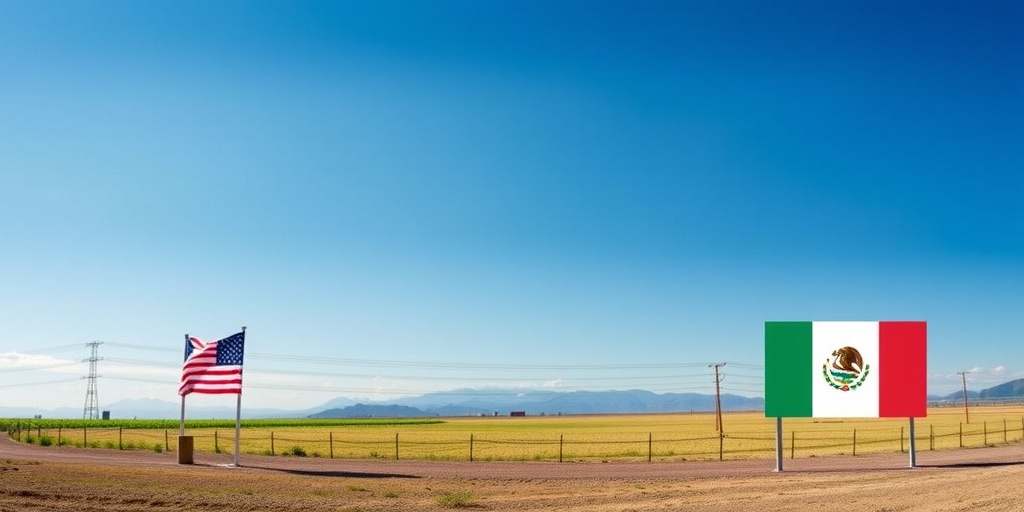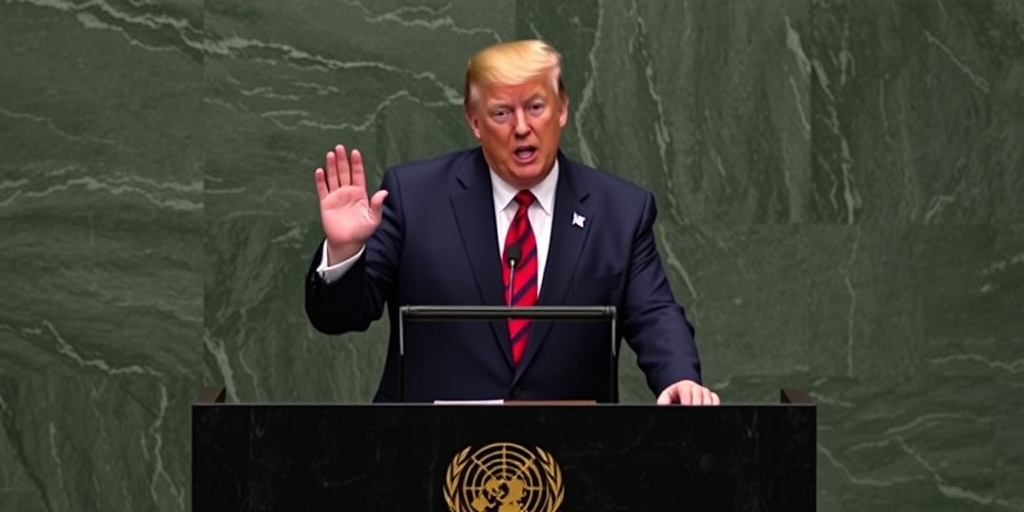Now Reading: Trump’s Strategy to Overhaul the Refugee System
-
01
Trump’s Strategy to Overhaul the Refugee System
Trump’s Strategy to Overhaul the Refugee System

Trump Signs Executive Order Suspending Refugee Resettlement in the U.S.
On Monday, President Donald Trump took a significant step in his administration’s ongoing efforts to reshape the U.S. refugee admissions program by signing an executive order that suspends refugee resettlement in the country. This action marks a continuation of policies established during his first term, where Trump aimed to dismantle a program that has historically provided sanctuary to individuals fleeing violence, persecution, and other forms of peril across the globe.
In the past, Trump has consistently expressed his criticism of the refugee resettlement program. He has claimed that the influx of refugees poses a threat to national security and is detrimental to American communities. “The United States lacks the ability to absorb large numbers of migrants, and in particular, refugees, into its communities in a manner that does not compromise the availability of resources for Americans, that protects their safety and security, and that ensures the appropriate assimilation of refugees,” the executive order stated. His rhetoric appears to reflect a belief that refugees may bring undesirable elements into the country, including potential terrorists.
During his initial term in office, Trump’s administration witnessed a drastic overhaul of the U.S. refugee system. Policies were enacted that reduced the number of refugees accepted into the country to unprecedented lows, fundamentally altering a program that had maintained bipartisan backing for decades.
The recent executive order signifies a suspension of refugee admissions effective next Monday, prompting leaders at the Department of Homeland Security and the State Department to submit assessments every 90 days to evaluate whether the refugee program aligns with U.S. interests. This structure appears to reinforce Trump’s ongoing skepticism regarding the role and impact of refugees in American society.
It is crucial to note that refugees are among the most rigorously vetted groups entering the United States. Individuals seeking asylum undergo extensive background checks, including security assessments, medical evaluations, and thorough interviews with U.S. officials conducted overseas. Under U.S. law, officials possess the authority to deny applications from individuals they believe pose a threat, although this determination can sometimes rely on suspicion rather than concrete evidence. During Trump’s first term, additional scrutiny was placed on refugees from 11 countries identified as "high risk," further tightening the admission criteria.
The executive order also underscores the extraordinary authority exercised by the president in determining refugee admission numbers. Each year, the president, in consultation with Congressional leaders, sets a cap on the number of refugees who can enter the country. Historically, this cap has remained high regardless of which political party holds the presidency. For example, in 2008, George W. Bush admitted around 60,000 refugees as he set a cap of 80,000 for that year, reflecting a commitment to humanitarian values despite political differences.
However, under Trump’s leadership, the refugee admissions process was significantly curtailed. After initially freezing the program, his administration implemented sharp reductions, proposing a cap of merely 15,000 refugees for the 2020 fiscal year—the lowest figure in the program’s 40-plus year history. The ramifications of these decisions led to a near-collapse of the refugee resettlement framework in the United States. Organizations dedicated to aiding refugees experienced dramatic staff reductions and resource constraints due to diminished admissions, exacerbating the challenges faced by newly arriving individuals.
By the end of Trump’s presidency, the immigration landscape had fundamentally transformed. In 2020 alone, just over 11,000 refugees were granted entry into the U.S., a staggering decline from the more than 80,000 admitted in 2016 before Trump took office.
In contrast, President Joe Biden sought to reverse the restrictive policies of the Trump era by slowly revitalizing the refugee resettlement program throughout his administration. This effort included hiring more personnel to support the program and expanding the network of offices dedicated to assisting refugees, resulting in approximately 150 operational offices as of the previous year.
By 2024, the Biden administration had successfully welcomed over 100,000 refugees into the U.S., marking the highest total in three decades. However, with Trump’s latest executive order, that number is almost certain to decrease significantly in 2025. The future of the U.S. refugee admissions program remains uncertain as the political landscape evolves and policies continue to shift under different administrations. For many, these policies hold profound implications for the safety and dignity of individuals seeking refuge from danger worldwide.
Stay Informed With the Latest & Most Important News
Previous Post
Next Post
Previous Post
Next Post
-
 01New technology breakthrough has everyone talking right now
01New technology breakthrough has everyone talking right now -
 02Unbelievable life hack everyone needs to try today
02Unbelievable life hack everyone needs to try today -
 03Fascinating discovery found buried deep beneath the ocean
03Fascinating discovery found buried deep beneath the ocean -
 04Man invents genius device that solves everyday problems
04Man invents genius device that solves everyday problems -
 05Shocking discovery that changes what we know forever
05Shocking discovery that changes what we know forever -
 06Internet goes wild over celebrity’s unexpected fashion choice
06Internet goes wild over celebrity’s unexpected fashion choice -
 07Rare animal sighting stuns scientists and wildlife lovers
07Rare animal sighting stuns scientists and wildlife lovers




















